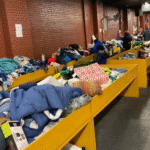Refrigeration systems depend on many internal components to function properly, but the sealing mechanism around the door is one of the most important. This seal, though small in size, plays a major role in maintaining stable temperatures, reducing energy waste, and protecting food quality. When the sealing material begins to fail, the entire system can experience strain, inefficiency, and inconsistent performance. These failures often happen gradually and can go unnoticed until the effects become costly.
Homeowners and businesses may not immediately connect temperature fluctuations or higher utility bills to a failing seal. Yet even a minor gap can disrupt the system’s ability to regulate cooling effectively. By understanding what causes deterioration and how to prevent early wear, users can extend the life of their equipment and avoid major repairs in the future. Early action is the key to maintaining a reliable and efficient appliance.
With guidance from experts such as Reliable Gaskets USA, recognizing the warning signs and taking preventive steps becomes much easier. Knowing how to identify the problems before they escalate ensures long-term reliability, energy savings, and consistent cooling performance in both residential and commercial settings.
How a Door Seal Functions
A refrigerator’s door seal works by creating a firm, airtight connection between the door and the frame. When the door closes, the seal compresses slightly, forming a barrier that keeps cold air inside and warm air outside. Without this barrier, the cooling system struggles to maintain the proper temperature, leading to increased compressor activity and inconsistent storage conditions.
The effectiveness of the seal is determined by its flexibility, shape retention, and ability to return to its original form after repeated use. If any part of the material weakens or loses its elasticity, small openings begin to form. Once this occurs, the cooling system is forced to work harder, resulting in increased energy usage and higher internal temperatures. A well maintained seal supports efficient operation and helps ensure that the unit performs as intended.
Common Causes of Seal Failure
Door seal failures can result from a variety of environmental, physical, and operational factors. One of the most common causes is normal wear from repeated door openings. Commercial environments, in particular, may expose seals to more frequent use than they were designed for, causing gradual flattening or stretching along the edges.
Another frequent cause is buildup of dirt, grease, or food residue. When debris accumulates along the seal or door frame, the material cannot make full contact with the surface. This leads to air leaks that compromise efficiency. Moisture also contributes to deterioration, especially in warm or humid environments where the material may become soft, sticky, or swollen.
Misalignment of the refrigerator door is another overlooked factor. Even a slight shift in hinges can prevent the seal from sitting evenly against the frame. Over time, this uneven pressure causes certain areas of the seal to wear out faster than others. Poor cleaning habits, harsh chemicals, and exposure to extreme temperatures can also shorten the lifespan of the sealing material.
How to Identify a Failing Seal
Failing seals often show visible signs of deterioration long before performance issues become severe. Cracking, hardening, or peeling along the edges indicates material breakdown. Warping or curling corners suggest that the seal is no longer sitting properly against the door frame. Gaps or loose sections that pull away easily are also clear indicators that the material is no longer providing a proper barrier.
Beyond visual cues, changes in performance can also reveal early failures. Frost buildup, condensation near the door, or warm spots inside the refrigerator may point to air leakage. A unit that runs longer cycles or struggles to maintain a consistent temperature may be compensating for a compromised seal. Higher energy bills without changes in usage are another sign that efficiency is being lost through gaps.
Simple at home tests can help identify issues as well. A common method involves placing a piece of paper between the door and the frame, then closing the door. If the paper slides out without resistance, the seal may not be functioning properly. Regular inspections and small tests can help detect early problems and prevent them from escalating.
Preventive Maintenance Practices
Routine maintenance goes a long way toward preventing premature seal failure. Keeping the material clean is one of the most effective steps. Wiping the edges regularly with warm water and mild soap helps prevent buildup that interferes with a tight closure. After cleaning, the seal should be dried thoroughly to avoid moisture related damage.
Maintaining proper door alignment is equally important. Checking the hinges periodically ensures that the door closes evenly across the entire frame. Avoiding heavy items in the door compartments prevents sagging or misalignment that can weaken the seal over time.
Environmental control also helps extend the life of the seal. Excessive heat or humidity can cause warping, swelling, or mold formation. Ensuring adequate air circulation around the refrigerator and avoiding placement near heat sources helps prevent unnecessary wear. Consistent maintenance keeps the seal flexible, clean, and effective throughout its service life.
When Replacement Becomes Necessary
Even with good maintenance, seals eventually reach the end of their lifespan. When deterioration becomes significant, replacement is the best option. Frequent condensation, frost accumulation, and noticeable gaps indicate that maintenance alone is no longer sufficient. Replacing the seal restores airtight performance and protects the cooling system from unnecessary strain.
Choosing the right replacement and ensuring proper installation are essential for long-term results. Poorly fitting seals or incorrect installation can lead to the same issues as old, worn materials. Working with trained professionals ensures accurate sizing, proper alignment, and a tight, consistent seal across the entire perimeter.
Professional installers like Reliable Gaskets USA provide materials specifically manufactured for durability and compatibility with a wide range of refrigeration models. Their expertise ensures that the door lining performs reliably and supports efficient operation over the long term.
The Role of High Quality Materials
The durability of a replacement seal depends heavily on the quality of the materials used. High grade materials resist cracking, hardening, and warping even under frequent use. They maintain flexibility, shape, and adhesion throughout daily temperature changes, allowing for a stronger, more dependable seal.
Quality materials also offer better resistance to cleaning products, moisture, and environmental stresses. This extends the useful life of the seal and reduces the frequency of replacements. Choosing a well made component not only improves performance but also saves money by minimizing long term maintenance costs.
Conclusion
Door seal failures can significantly impact the performance, efficiency, and lifespan of refrigeration systems. Understanding how deterioration occurs and recognizing early signs helps prevent costly problems before they develop. Regular cleaning, inspection, and proper door alignment all contribute to a longer lasting seal and more efficient operation.
When replacement becomes necessary, choosing high quality materials and professional installation ensures reliable, long term performance. With expert guidance from Reliable Gaskets USA, maintaining an effective barrier is simple and cost efficient. A properly functioning refrigerator gasket supports consistent cooling, energy savings, and dependable operation for years to come.







